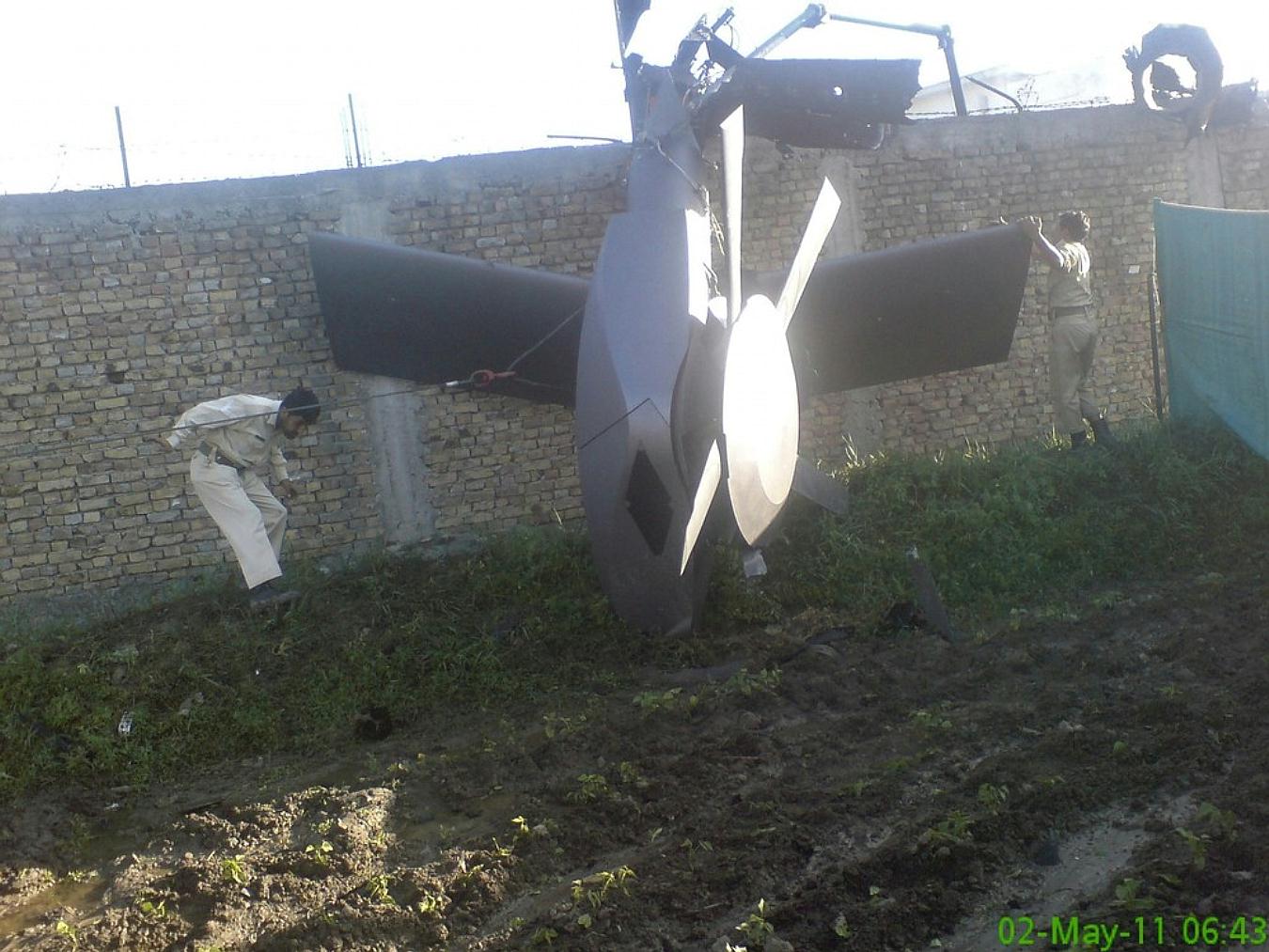Related:
4 May 2011,
Cryptome: Reuters Photos of Dead At Bin Laden Kill Site
http://online.wsj.com/article/SB10001424052748703992704576305573936767298.html
MAY 6, 2011
Crashed Copter Sparks Concern About Secrets
WASHINGTON--The crash of a helicopter involved in the raid on Osama bin Laden's Pakistani hideout has prompted intense speculation about whether the aircraft was specially modified to fly stealthily--and whether its remains could offer hostile governments clues to sensitive U.S. military technology.
According to U.S. officials, two Black Hawk helicopters carrying Navy SEALs landed in the compound in Abbottabad, while two other helicopters circled overhead. One Black Hawk was disabled during the landing, and had to be destroyed by the commandos.
However, remnants of the helicopter, including a nearly intact piece of its tail, suggested that the aircraft involved in the raid wasn't the typical MH-60 Black Hawk flown by special-operations forces. Aviation experts who scrutinized photos of the scene say the tail had unusual features that suggested the helicopter had been extensively modified to fly quietly, while appearing less visible to radar.
The U.S. military has tried in the past to build a stealth helicopter, but has kept secret if it has indeed succeeded.
The wreckage in Abbottabad appeared to have exotic coatings and distinct surfaces and edges reminiscent of stealth aircraft such as the B-2 bomber and the F-22 fighter, aviation experts say. Equally important, they pointed to an unusual dishpan-shaped cover over the tail rotor, perhaps designed to make the aircraft quieter.
"The odds are fair--based on my knowledge of the subject area--the vast majority of the special MH-60s aircraft were purpose-built to make those aircraft as stealthy as they could possibly be," said Jay Miller, an author who has written extensively about stealth aircraft.
Mr. Miller said the remnants of the aircraft suggested extensive use of nonmetallic composite parts, which reflect less radar energy. Likewise, he said the tail's remains suggested that it was designed to shroud or mask metal parts, which are much more visible to radar.
In addition, experts said the tail rotor's design suggested an effort to reduce the "acoustic signature" of the helicopters--in other words, to make them fly more quietly.
Rex Rivolo, a former Black Hawk aviator and helicopter expert, said the distinctive noise of a helicopter's rotor blades is "the signature that gives you away."
Mr. Rivolo said the military had studied a number of methods for reducing helicopter noise, including pairing helicopters with unmanned aircraft to cancel out noise.
But he was skeptical about how far those efforts had advanced.
"It's really never materialized," he said. "'Whisper mode' just doesn't exist."
The U.S. Army spent billions developing the Comanche, a stealth-helicopter project canceled in 2004. Two prototypes were developed, but Comanches were never fielded because of their high price.
Stealth features would have been particularly important in the bin Laden mission: The Navy assault team presumably wanted to give those in the compound as little warning as possible.
In addition, the commandos entered Pakistani air space without permission of the Pakistani authorities; the longer it took for the Pakistani military to realize the helicopters were there, the less likely they would interfere in the U.S. mission.
The recovery of the tail by the Pakistanis raised questions about whether some of the unique technology may have fallen into the wrong hands.
Rep. Howard "Buck" McKeon (R., Calif.), the chairman of the House Armed Services Committee, told reporters Thursday he was unaware of any efforts to retrieve the tail. He said there wasn't much left of the aircraft after the SEALs blew it up, said a staffer who was present. The Pentagon declined to comment on the downed helicopter.



